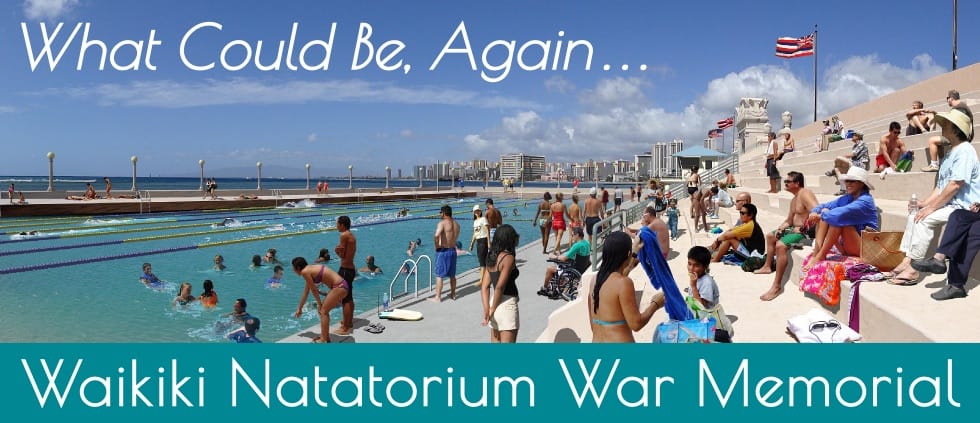The latest Honolulu Weekly looks at local news media’s less-than-aggressive coverage of the Natatorium issue… and what happened when the Weekly’s managing editor, Adrienne LaFrance, tried to ask the tough questions. Read her story here and then tell us in the comments what you think. Have Honolulu’s reporters covered the Natatorium story adequately? Should the mayor be more responsive to questions about his position?
Search
Testimonials
My Aunt Ethel Hobbes was a Nurse in WWI. She died while taking care of troops who had contracted the Asiatic Flu. She was only 20 years old. Please save this memorial in Honolulu. History should never be forgotten. The sacrifice of our WWI service personnel is part of the fabric of what makes us Americans.
— Jane Varcoe
Support the Natatorium
Any amount will honor them and keep their memory alive. All donations go to Friends of the Natatorium, a 501c3 nonprofit, and are tax deductible. There are also many non-financial ways to support the Natatorium.
Subscribe for Updates
Recent Posts
- Info on the 2022 Memorial Day Observance at the Waikiki War Memorial Natatorium — Sunday, May 29, 10 a.m.
- A Memorial Day Message from the Friends of the Natatorium
- Yes, we will observe Memorial Day and honor America’s war dead in 2020 — just differently
- Support the work of the Friends of the Natatorium. Mahalo!
- Mahalo, Natatorium supporters!
Categories
Natatorium Historic Preservation Resources
Copyright © Friends of the Natatorium 2007-2018. All rights reserved. Policies

Trase Wagner
How about they fill in the pool area with cement and turn the nadatorium into an outdoor concert venue. It would be one of its kind in the world lying on one of the most famous beaches in the world. Honolulu does not have a diverse selection of concert venues pretty much Waikiki Shell, Blaisdell, and Pipeline Cafe. It would be an awesome small intimate venue with the ocean in the background.
natatorium
Trase, although converting the facility as a concert venue may seem like a great adaptive re-use, there a number of reasons why it is not feasible. First and foremost being that the Act 15 of the 1921 Territorial Legislature of Hawaii specifically designated the “living memorial” contain a “swimming course.” Altering the use of this National and State Historic Registered facility would trigger a host of legal problems. In addition, area residents have made it clear that a concert or “show venue” would meet with vocal opposition. The Friends of the Natatorium, Historic Hawaii Foundation, 85,000 member Oahu Veteran’s Council and National Trust for Historic Preservation are all advocating the Natatorium be preserved and reopened as the community swimming venue it was intended to be.
Tsarkie
This was printed in The Honolulu Advertiser on Saturday, February 6, 1999 in the Hawaii Section Reader’s Journal column. You have my permission to print or link.
Roberta Akamu
Loved your story. So touching. I’ve been to the natatorium after I’ve gotten older, but never did swim in it because it was already in disrepair. I’ve heard, but don’t know if it’s true that Duke Kahanamoku used the natatorium as his training ground for his swimming competition.